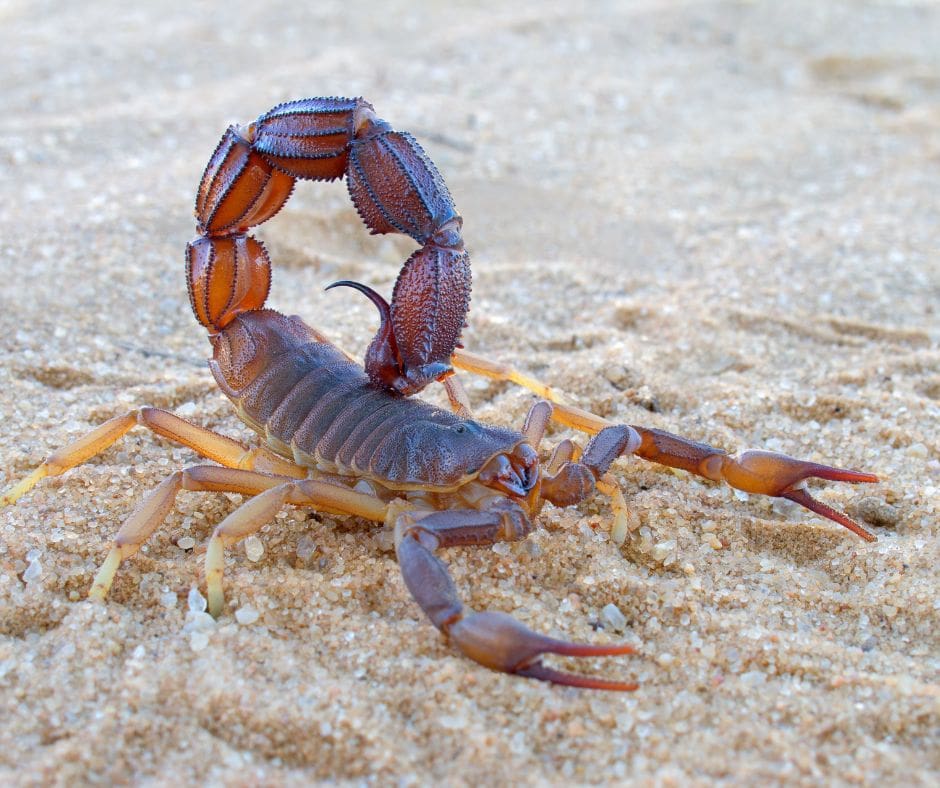The Fascinating World of Scorpions: Their Role in the Ecosystem and Interaction with Humans
Scorpions have been around for hundreds of millions of years, long before dinosaurs roamed the Earth. These ancient arachnids are fascinating creatures that play crucial roles in their ecosystems. Let’s explore what scorpions contribute to the environment, their preferred hiding spots, the nature of their venom, how to treat a sting, and the intriguing way they glow under ultraviolet light.
Scorpions in the Ecosystem
Scorpions are essential predators in many ecosystems, helping to control insect populations. By preying on insects, spiders, and even small vertebrates, they help maintain a balance, preventing any single species from becoming too dominant. This control of insect populations can be particularly beneficial in agricultural areas where pests can damage crops. Additionally, scorpions themselves serve as food for larger predators, including birds, reptiles, and mammals, contributing to the biodiversity and health of their habitats.
Where Do Scorpions Hide?
Scorpions are typically nocturnal and prefer to stay hidden during the day. They seek out dark, cool, and moist environments to avoid the heat and stay hydrated. Common hiding spots include under rocks, logs, and leaf litter, inside burrows, and within the crevices of trees and buildings. In homes, they can be found in shoes, closets, and other undisturbed areas. Understanding their hiding places can help in preventing unwanted encounters.
Venom: Is it Dangerous?
Scorpion venom is used primarily for hunting and self-defense. While all scorpions possess venom, the potency varies widely among species. Most scorpion stings cause localized pain, swelling, and redness similar to a bee sting and are not life-threatening. However, a few species, such as the Arizona bark scorpion, have venom potent enough to cause severe symptoms or even be fatal, especially in children, the elderly, or individuals with allergies.
Treating a Scorpion Sting
If stung by a scorpion, it’s important to remain calm. Here are the steps to follow:
- Clean the Area: Wash the sting site with soap and water to prevent infection.
- Apply a Cool Compress: Use a cool compress or ice pack to reduce swelling and numb the pain. Avoid applying ice directly to the skin.
- Pain Relief: Over-the-counter pain relievers such as ibuprofen or acetaminophen can help manage pain.
- Monitor Symptoms: Keep an eye on the person stung for any severe reactions, such as difficulty breathing, excessive swelling, or muscle twitching. Seek immediate medical attention if these symptoms occur.
In regions where highly venomous scorpions are found, it’s wise to contact a medical professional after a sting for advice, even if symptoms seem mild.
The Glow Under Ultraviolet Light
One of the coolest features of scorpions is their ability to glow under ultraviolet (UV) light. This phenomenon, known as fluorescence, occurs because of substances in their exoskeleton that absorb UV light and re-emit it as visible light. Under a UV lamp, scorpions appear to glow a bright blue or green color, making them easier to spot in the dark. Scientists are still studying the exact reasons for this fluorescence, but it is believed to offer some protection against UV radiation and may also play a role in communication or predator deterrence.
Scorpions, with their ancient lineage and unique adaptations, are remarkable creatures that contribute significantly to their ecosystems. Understanding where they hide, the nature of their venom, and how to treat stings can help coexist peacefully with these arachnids. Plus, witnessing their eerie glow under UV light offers a fascinating glimpse into the hidden wonders of the natural world.
For more intriguing articles and insights about the wonders of Costa Rica’s wildlife and environment, keep following Howler Magazine. #howlermag #howlermagazine






